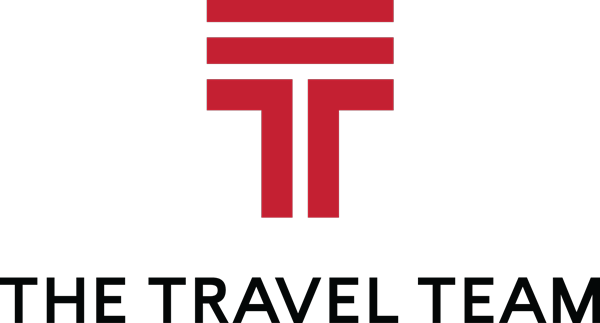Safe and efficient business travel is the lifeblood of any successful corporate travel program and the companies that rely on it to thrive. Make your company’s corporate travel program more dynamic and goal-oriented with corporate travel risk management (TRM) services. With comprehensive TRM, employees can confidently pursue opportunities wherever they arise across the globe with help from a travel program designed for traveler well-being and success.
What Is Travel Risk Management?
Travel risk management (TRM) is a holistic management and risk reduction system designed to integrate strategic emergency and efficiency contingencies into corporate travel programs. Incorporate the knowledge of experienced travel advisors, leverage advanced travel data, and promote travel safety best practices at the policy level with TRM. Unpredictable and high-risk travel conditions include social, civil, and political unrest, natural disasters, health emergencies, family emergencies, and cyber threats. When employees know their travel program has their back, they bring peace of mind into every business situation.
TRM systems like TTTMobile also provide critical data regarding flight and airport logistics. Having valuable insights like flight and destination alerts helps travelers avoid unexpected nuisances like delays or disruptions. Up-to-date flight statuses, fare details, and airport navigation offer a seamless experience.
What Is Duty of Care?
Duty of care refers to the responsibility of a company and its travel managers to promote the safety and success of their employees when traveling for business. The Travel Team’s duty of care platform, integrated with TTTMobile, enables monitoring of travelers’ status and the potentially risky conditions they face with sophisticated travel restriction monitoring, risk alerts, and heightened risk warnings.
Why a Travel Risk Management Program?
From regional businesses to Fortune 500 companies, travel programs of any budget or structure can benefit from TRM. Large and growing travel management programs can gain the predictability and continuity they need to succeed from enhanced safety protocols and powerful risk management analysis tools. These resources leverage the knowledge of experienced travel management professionals to provide up-to-the-minute data, proactive assessment, and risk mitigation for a range of fluctuating travel conditions. Knowledge gained from these insights programs ensures safer, more streamlined travel, especially when the unexpected occurs.
Just as one-size-fits-all solutions don’t fit your business travel program’s individual needs and goals, the benefits of TRM can depend on the risks your program is exposed to. These can include regions of the world most impacted by global pandemics as well as generational weather events.
How Does TRM Benefit Travelers?
Travelers are likely to see immediate benefits from TRM through a more comprehensive and precise system of travel that brings continuity and predictability. No matter where they go, travelers and travel managers can rest assured they have access to the most recent reliable flight, airport, and destination information as well as the logistical support needed to make sound decisions. Duty of care measures also offer travelers peace of mind they’ll have support readily available should an emergency arise.
How Does TRM Benefit Travel Managers?
Travel managers often wear many hats, with the day-to-day operations of a company’s travel program constituting just one responsibility of many. And that’s when everything is running smoothly. Unexpected small and large-scale travel disruptions can quickly push the economic health of your travel program off course on top of putting employee well-being at risk. Building a responsive and resilient travel program takes foresight and adaptability by managers. TRM tools allow travel managers to efficiently track and monitor complex travel landscapes.
How Does TRM Benefit Companies?
Growing travel programs are subject to a variety of risks, and can expose a company to reputational harm when duty of care is not satisfactorily met. According to some interpretations of OSHA regulations, US law requires businesses to take steps to protect employees in the workplace, even if that workplace is overseas. Companies can use TRM tools to create programs or adjust policies that are legally compliant with both local and international laws, potentially saving costs and protecting the company’s reputation.
How to Implement TRM Into Your Corporate Travel Program
Adding duty of care and travel risk management into your travel program provides longstanding value to corporate travelers, travel managers, and the companies they work for.
Create or update your business travel policies
Corporate travel policies should provide a clear, in-depth overview of every aspect of the trip. This includes pre-travel planning factors like visa applications, proper vaccinations, and contact details as well as rules concerning spending, business trip guests, and emergency procedures.
Use tools with concurrent data and risk assessment
To make well-informed decisions, you need accurate information. Real-time data provides alerts your team can trust about flights, airports, and destinations at any time. From hotel cancellations to natural disasters, data gives you the power to make safer, more cost-effective choices.
Establish emergency response plans
As mentioned, emergency procedures are a must for TRM. Employees should know exactly who to contact if a crisis arises. Duty of care tools can also protect team members with location tracking and immediate alerts.
Have travel wrap-up discussions
Following a trip, gather feedback from travelers and travel managers. This is important to see what aspects of your plan work and others that could be tweaked to provide an even better experience next time.
Together, The Travel Team’s tools and expertise provide coordinated end-to-end travel program management services including risk monitoring, expense management, travel planning, and online booking support.


